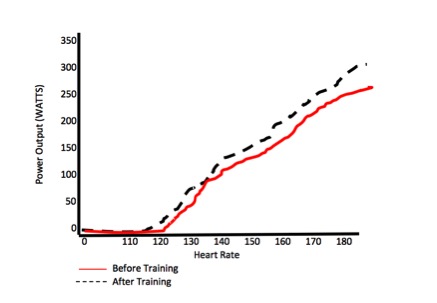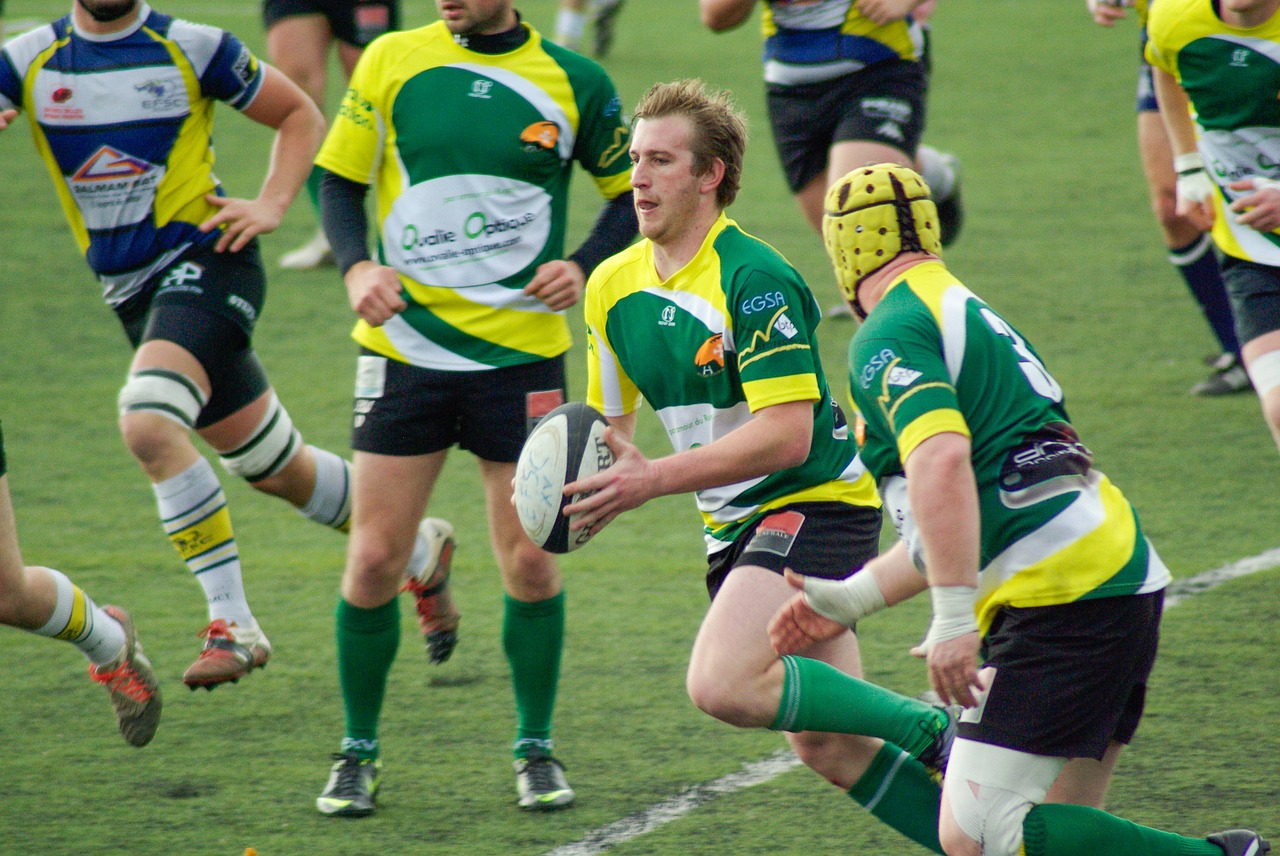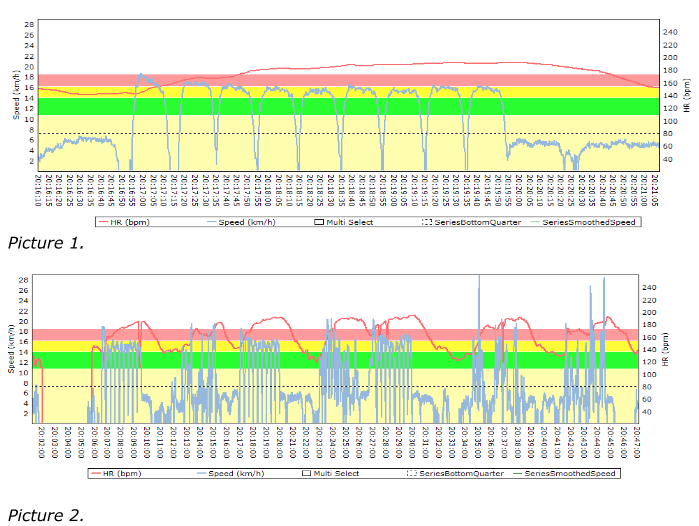
Success in field sports (rugby, soccer, lacrosse etc.) performance is highly dependent on an athletes ability to repeatedly perform high speed efforts (High speed categorized by relative to an individuals max). This can be very taxing on the body, but having the ability to sustain these high intensity efforts is what separates a win from a loss. Field sports matches can last up to 90 minutes; in some cases more with extra time in cup competitions taking matches to 120 minutes. Underpinning this all is an athletes aerobic metabolism. Within this short article I will outline my method as to how I prepare the athletes I work with to overcome this limiting factor to performance.
There are lots of debates about how to improve repeat sprint ability. Do we make the athletes perform shuttles for time? Do we run them in the fashion of a phosphate recovery test? Or do we change our way of thinking? It is often a coach's downfall when they try to make their training look like the sport they coach. In my opinion this is what the sports and sports practice is for, otherwise I would be out of a job. The key point that is often taken for granted is that the human organism cannot survive without oxygen. So I ask the question, why do coaches run repeat lactate effort work without addressing the necessary central aerobic adaptations first? Given credible strength and conditioning coaches knowledge of VO2 Max assessments, we know that athletes performances decline when their ability to produce force or buffer lactate ceases. With that in mind, we know that attempting to work supramaximally for extended periods of time leads to an increase of power, a.k.a. running speed. Therefore the question has to be, "Where do I start to prepare my athletes for field sports?"
What is the Aerobic Energy System?
The aerobic energy system utilizes oxygen and fat to produce ATP (adenosine triphosphate) to generate power. Aerobic metabolism is highly dependent on three variables: the amount of inspired oxygen, how the body utilizes this available oxygen, and the amount of stored sugars and fats available. For me, aerobic metabolism is the unsung hero of repeatability and should always be your first port of call when working with team sports. Having a more developed aerobic energy system will decrease the bodies ability to rely on anaerobic energy production to produce power. This is called aerobic power.
The knock on effect to this in terms of team sports is a higher distance covered per minute. It important to make reference to younger populations. They do not require high levels of aerobic work as they have a natural high aerobic capacity. More attention must be paid to movement literacy and strength. It can be forgotten that the heart is a muscle like any other. It acts eccentrically and concentrically to transport blood via the circulatory system. Therefore we need to train the heart in that manor.
Eccentric cardiac hypertrophy (direct indicator of stroke volume) is the only place to start but the benefits of this type of training can be discussed in another article. Secondly to this concentric cardiac hypertrophy (increasing cardiac wall thickness) is also an extremely integral piece of the puzzle. However, sometimes you are faced with limited time and resources.
Within the team sport environment, I have found a great use for integrating aerobic threshold training as a great starting point. The reason for this is due to time available and bang for your buck. Aerobic threshold training is a method of training designed to increase aerobic power. Increasing aerobic power as previously mentioned is key for a higher base work rate. This is where the anaerobic threshold comes into play. The anaerobic threshold is the point at which an athlete cannot sustain aerobic work at a given speed and respective heart rate, sometimes referred to as Maximal Aerobic Speed (MAS). The task is to raise the point of the anaerobic threshold, increasing aerobic power resulting in greater efficiency. Therefore this method requires the body to produce ATP at a fast rate whilst predominantly working aerobically. This method of training is a very powerful training stimulus to which great performance gains are attained.
The graph below is a simple graphical depiction threshold training improvements.
Now that I have briefly explained the rationale behind the aerobic threshold training method, I am going to explain how I assess it and initially implement it. Finding an athlete's threshold speed is a very simple procedure. I personally use the method of an on-feet time trial. Preferably on an athletics track, but if you have a trundle wheel you can devise your own 'track.’ This varies depending on the population I am working with. If you are able to track heart rates within these tests, I advise it.
However, it is not always necessary as I have validated heart rates post training prescription with a sufficient level of accuracy for in the field. If you choose to monitor heart rates, your threshold heart rate score will be your average for the duration of the test.
Once you have completed your time trial and got your respective heart rates you then need to calculate your power. For our on-feet testing procedures this is easily calculated as prescribed in meters per second. Below I have produced an example:
1500m (time trial score)/360 (test time in seconds) = 4.1 m/s
From this simple equation you now have the metric that you are going to manipulate to periodise your training volume and intensity, going against traditional thoughts of maximal aerobic speed training working above threshold in an intermittent fashion inducing higher levels of lactate. I like to program sub maximally within sports practice training. Just in the same way you wouldn’t perform your 1RM every time you train, I feel this approach needs to be applied to energy system training. Time in zone is the key variable within this system, which will yield the training transfer. Not to mention, we must not forget the lack of longitudinal effect of Tabatta training.
Secondly to this there is a high metabolic cost. As previously stated, I tend to prescribe my threshold efforts within sports training practice and organise my progressions according to time of year. I have used linear, wave, and concurrent training approaches with great results. I have also implemented threshold training as a standalone training session. When training in the standalone fashion I tend to ramp the time in zone due to the lack of other stimulus. Therefore my vertical integration paradigm has changed.
Within my on-field sessions I prescribe three minute efforts utilizing long shuttles. This is mostly used due to logistical reasons. The reason for this is that I have predominantly used this with rugby players and three minutes is a sufficient block of time reflecting an extended passage of play within the specific populations used. However, as a standalone session I have prescribed up to six minutes per set. Image 1 shows a GPS trace (blue line) of one set of ‘threshold runs’ with corresponding heart rates (red line). Image 2 shows how a full rugby skills practice session in pre-season will look.
From utilizing this method I have successfully managed to increase threshold performance by up to 20% in some cases within as little as three weeks (6-9 sessions). The added benefit of this method is that you can pulse it within your skills practice very easily.
I feel as strength and conditioning coaches our job is to provide the lowest level of stimulus to reap the highest reward and do this repeatedly. We need to facilitate our skills practice incorporating conditioning with academia at the forefront, not just mindless running or ‘conditioning games’. These belong on the scrap heap with aerobic steps and gas masks and the like. Some circumstances could benefit greatly from this proposed organisation of aerobic threshold training, but it would be up to the coach to use informed knowledge to manipulate it in the best possible way for the given environment.
Thank you for taking the time to read my article.
Sam Portland is a Strength and Conditioning Coach working in the UK with the professional side Wasps Rugby. A university of Brunel Graduate, Masters Student and aspirational Phd driven coach Sam finds himself predominantly working with the Rehabilitation Athletes alongside managing the GPS system at Wasps. A multi sport athlete as a youngster and rugby player from early years Sam has competed in the national leagues for the bulk of his career. Sam also consults with semi-professional rugby players/teams, weekend warriors and athletes from Track and Field and various other sports.














Thanks for a good read
Just curious, what are you prescribing rest wise as I can't see it mentioned? Is it heart rate based or is there some ratio/s that you adhere to?
What is the volume you do ie how many reps/rounds
Also you said you do some 6 minute blocks - given that you are testing over 6 minutes and running them at their MAS does that not mean you are just maxing them out?
That would defeat the purpose of performing submaximally as you stated?
Especially if they are then completing more reps which I imagine they are?
Sorry for all the questions, I liked the article but am a little confused?
Thanks
No mention of how many reps per session or time spent at that speed - could you elaborate?
You test with 6 minute run then prescribe 6 minute run at the same pace - would that not be considered a max effort? Definitely not sub max as you stated especially considering you would be doing more than one rep (I assume)?
Loved the article and just looking for more information!
Thanks
I'm not sure which of your replies to respond to. I'll go with the second one.
I'm glad you enjoyed the article. However, this peice wasn't a step by step 'how to' guide. It's a concept of training that can be expanded for your sport. You need to change the variables based on what you feel relevant for your athletes if at all.
As mentioned I run my athletes for 3 minutes at caring intensities of threshold speed. Therefore this doesn't constitute max effort. I increase the time in zone appropriately given my knowledge of my athletes and sport/training session content. I am a firm believer of how this can effect the bodies ability to buffer lactate and improve repeatability.
Thanks again for commenting.
When I commented I did not realize after I clicked "Leave A Comment" that it would not appear right away and then tried to comment once again. Once I realized, I couldn't actually delete the first comment but regardless - thanks for your response!
One further question if I may - influences on this style of programming? I know you are a fan of Joel Jamieson's work - is there anyone else that you get your information from?
Cheers
Chris